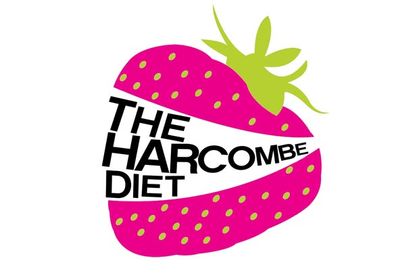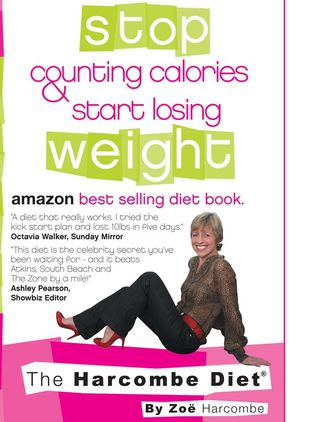The Harcombe Diet - the three phases and meal plan ideas
We're hearing a lot of good things about The Harcombe Diet, and the results it delivers, but what's it all about?

The Harcombe Diet encourages weight loss by shunning calorie counting and proving that you can in fact lose weight by eating as much as you want. Sound good? We thought so. Read on...
The Harcombe Diet is a diet which set out to answer the age long conundrum of why we have such an obesity problem in the UK, when many of us wish we could lose weight.
Written by a lady who struggled to find a diet that works and battled sugar cravings (sound familiar?), not only does it say that calorie counting is a miserable process, but also that the only way to successfully lose weight is to work with your body, not against it.
So what's the Harcombe Diet all about?
The real selling point of this diet is that it starts out like a normal diet, but eventually becomes a lifestyle choice, meaning that you can maintain your dream weight for life. While there are things you can and can't eat, there are no restrictions on how much you can eat - and we certainly like the sound of that.
Unlike diets such as the 5:2 diet and the 16:8, the Harcombe Diet isn't based around the amount of calories you consume. Instead, it's about what you're consuming.
The idea is that the more we restrict our calorie intake, our bodies will react by slowing our metabolism and trying to store more fat, so that eventually you need fewer calories to live off. The Harcombe Diet promises to work withyour body, not against it, by providing it with good food (and plenty of it), but just of the right stuff.
The three phases
The diet is split into three phases, an intense, initial diet, then a second phase of a slightly more relaxed one, and finally phase three, which is all about following a few simple rules that will make the diet work for you for the rest of your life.
GoodtoKnow Newsletter
Parenting advice, hot topics, best buys and family finance tips delivered straight to your inbox.
- Phase 1: This is the intense bit. For five days you have to stick to a pretty basic diet, designed to give your weight loss a 'kick-start'. While you might find this first phase tough, it's deliberately set for the start of your diet, when your motivation and will power is at its highest.
- Phase 2: Is generally a less intense version of Phase 1. It aims to continue what you've started in the first phase, but with a more varied diet, and is more fun and tasty, too.
- Phase 3: Is meant to be for as long as you want to maintain the weight you've achieved, (ideally, forever!).
So, what can I eat?
What you can eat varies phase by phase.
In Phase 1... You're going back to basics. You can eat as much fish and meat as you want, provided they are fresh, unprocessed and unsmoked. This can include pretty much anything, like chicken, pork, beef, duck, lamb, bacon, ham, salmon, mackera, tuna, prawns, shellfish etc.
This also includes tinned fish, provided there are no other added ingredients other than oil or salt.

This pan-fried salmon (lightly fried in olive oil or butter) with a bean salad and olive oil dressing, is the perfect Harcombe Diet meal for Phase 1 and 2.
You can eat as many eggs as you want and almost any vegetables except mushrooms and potatoes.
You can have as much natural live yogurt as you like and as much water, herbal tea and decaffeinated tea and coffee as you like (without milk), and up to 50g of brown rice or oats a day (150g for vegetarians).
During this first five-day phase you cannot eat: mushrooms, potatoes, fruit, cake, biscuits and confectionary, cheese, milk, alcohol, fruit juice and anything that's been pickled or processed.
Meal planner ideas for Phase 1
- Poached eggs and bacon
- Steamed white fish with salad a lemon and olive oil dressing
- Roast chicken with garlic and vegetables
In Phase 2... There are pretty much three rules to this: avoid processed foods, don't eat fats and carbs in the same meal, and don't eat foods which give you cravings.
The simple way of avoiding processed foods is by only eating things that are 'real' food, that means that you shouldn't eat anything that's not in it's natural form. For example always eat brown rice, wholemeal pasta and bread, instead of the white alternatives. Don't eat sugar, except for those naturally found in fruit, milk, and whole food (yes, that does mean giving up Mars Bars, cakes, biscuits, sob!). Eat potatoes, not chips. Eat fish, not fishfingers. Don't drink fruit juice, eat fruit. And you should only eat fresh, unprocessed meats that have no added ingredients.
Meal planner ideas for Phase 2
- Ham omelette
- Tuna Nicoise with salad and balsamic dressing
- Strawberries and natural live yoghurt
In Phase 3... Is the fun phase! And hopefully one you can follow for the rest of your life. You should enter this phase when you have reached your natural weight in Phase 2. Except in this phase, you can pretty much eat what you want at almost any time. However, eating anything and everything is a bit of a cheat. So you must follow the rules that you shouldn't cheat too often, shouldn't cheat too much, and you must stay in control.

Basically your goal should still be not to eat processed foods, but you can have a calorific dessert on a special occasion or indulge in something you really, really fancy, just not too often. The idea is that you've now learnt enough about good food and beaten cravings for long enough, that you won't instantly want to devour a whole tub of ice-cream straight from the tub!
To read more on exactly why the Harcombe Diet works, detailed meal plans and how to separate fats and carbs for your different meals in Phase 2, you can buy The Harcombe Diet: Stop Counting Calories and Start Losing Weight, by Zoë Harcombe.
Gemma Chandler is a lifestyle writer specialising in kids' educational media across a range of topics including nature, history, science and geography across digital, print, social media and video channels. She joined Creature & Co. at 2015, shortly becoming Digital Editor of National Geographic Kids magazine.
-
 Does Prince Harry and Meghan Markle's new family-friendly Netflix show mean we'll see more of Archie and Lilibet? We share everything we know
Does Prince Harry and Meghan Markle's new family-friendly Netflix show mean we'll see more of Archie and Lilibet? We share everything we knowRoyal fans are hoping to catch a glimpse of the youngsters
By Charlie Elizabeth Culverhouse Published
-
 Bluey surprises fans as they drop new secret episode following season 3 finale - and fans are shocked about the new storyline
Bluey surprises fans as they drop new secret episode following season 3 finale - and fans are shocked about the new storylineA final episode titled The Surprise is available to watch now!
By Charlie Elizabeth Culverhouse Published